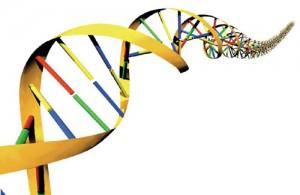 As Steve Jobs steps down from his position at Apple, he leaves behind a legacy that doesn’t seem to be lost on anyone considering how many retrospective pieces have been published. However, this media storm is unsurprising. Jobs’ roller coaster career with the company and ultimate redemption borders on a fairytale and has led to a consumer base that identifies with Apple tech at an almost genetic level. One undeniable element Jobs brought back to the ailing company was a design philosophy based on things humans recognize as objectively beautiful. Apple designs appeal to something deep within us, far past the aesthetic surface. There are things we mechanically recognize as beautiful, things we immediately if subconsciously find comforting or soothing.
As Steve Jobs steps down from his position at Apple, he leaves behind a legacy that doesn’t seem to be lost on anyone considering how many retrospective pieces have been published. However, this media storm is unsurprising. Jobs’ roller coaster career with the company and ultimate redemption borders on a fairytale and has led to a consumer base that identifies with Apple tech at an almost genetic level. One undeniable element Jobs brought back to the ailing company was a design philosophy based on things humans recognize as objectively beautiful. Apple designs appeal to something deep within us, far past the aesthetic surface. There are things we mechanically recognize as beautiful, things we immediately if subconsciously find comforting or soothing.
It’s an important lesson for any industry: How can you get in tune with the most basic functions of your audience? Bloggers often publish list pieces due to the cursory nature of reading on the Internet. Media content providers calibrate the length of their video production to the attention span of their target demographic.
Here are the top three ways Apple has effectively tapped into our biological attraction, making their products more appealing to our deeper sensibilities.
The Golden Ratio
Apple screens are exactly the dimension of a Golden Rectangle. The Golden Rectangle is known in many arts and mathematics circles as an aesthetically pleasing ratio. It occurs in nature and throughout history. Apple intentionally uses this ratio in its displays because of Jobs’ obsession with taking all the great things from history and bringing them into the business aesthetic of his company.
Heartbeat Light
The gentle pulsating light that undulates on the front of Macbooks indicating that they are asleep is not set to any arbitrary timer. It is intentionally designed to simulate the beating of the human heart, a pattern we are introduced to as embryos that’s reinforced throughout our lives as sequences of DNA, tidal flows, and subconscious cognitive states like when we go to sleep at night.
Prosthetic Quality
In the 21st Century, we have an innate relationship with technology. As we move away from the conformity of sitting at a desk with fingers curled over a keyboard, we are adapting a more human form with our use of technology.
Apple products have innovated in a way that is effectively turning technology into an extension of the human form. Obviously, we are not able to key in codes on our forearms to contact people, but in extreme forms of symbiosis people can experience an event, whip out their phone, send out a tweet and get a response in less than 60 seconds.
This is not limited to Apple products, of course, but the smartphone as we know it is basically Apple’s idea. This radical, trendsetting idea has somehow managed to popularize tablet computers – a newer breed of devices that some experts believe will bring an end to traditional PCs. This technology ecosystem is the nascent form of the increasing prosthetic role these devices play in our lives.
